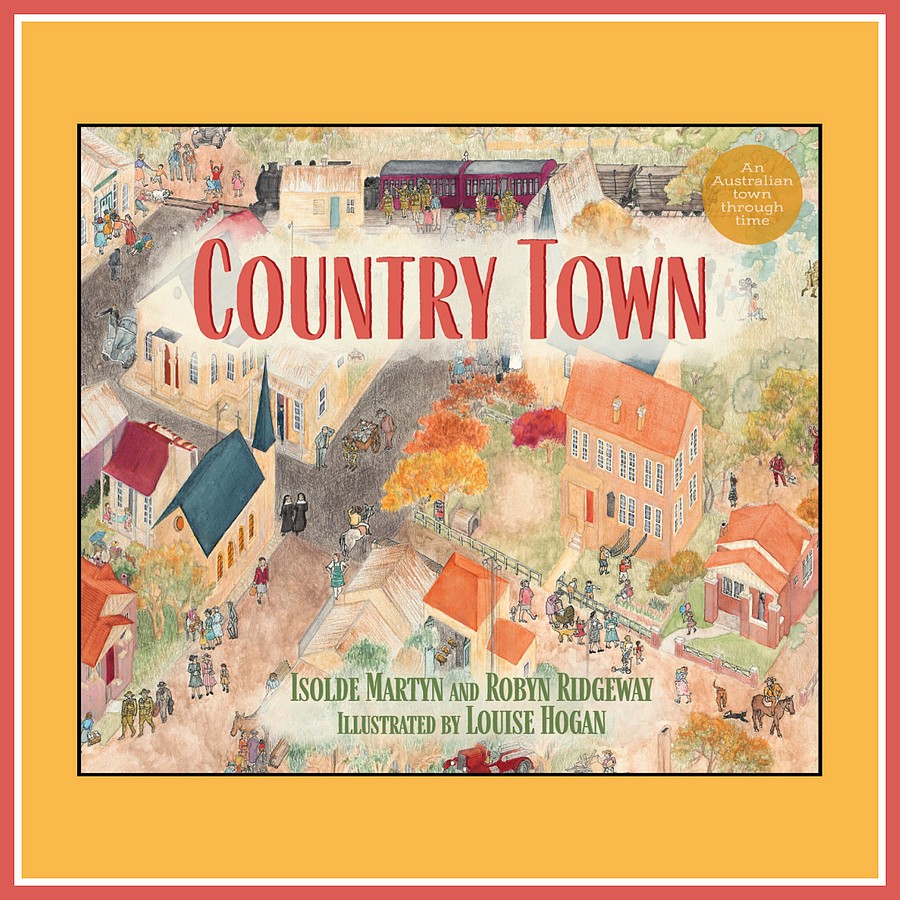
I have been lost in the pages of Country Town written by Isolde Martyn and Robyn Ridgeway, illustrated by Louise Hogan and published by Ford Street Publishing. This is a unique, meticulously researched, captivating book that places the reader in a fictional inland Australian town (which the creators invite readers to suggest and submit a name for) and details the historical, social, physical, economic and technological changes that take place decade by decade. The authors chose to create a fictional town as this afforded them the freedom to include a breadth of experiences that have occurred in many Australian towns and include multiple perspectives. This picture book employs some metafictive devices such as the narrator directly addresses the reader (often posing questions), multiple characters contribute to the stories and there are stories within stories to unpack which all contribute to making this book one to revisit often as it offers lots of opportunities to address the prompts.
Fourteen ‘events’ have been included and on page 5, it states that this book “begins with a river crossing where a clan of First Nations people has made camp for thousands of years” and continues to the final scene, a carols by candlelight Christmas gathering in 2018. At this Christmas celebration Rosie has so much to celebrate as she has finally found her stolen daughter and can now meet her teenage granddaughter for the very first time, plus she is being awarded the Order of Australia. The first event is “River Camp” in 1822 and is told from the perspective of an Aboriginal child who describes the peaceful life they enjoy, the deep connection to Country they have, how Elders pass down knowledge, through stories, about culture and sustainable practices. The child is perceptive and feels change is coming. The accompanying illustration is one of a lush, thriving, green bush setting that is tranquil and healthy. In this environment the unpolluted river is being used and the reader can observe people hunting, living on Country and gathering together.
The story continues with “the coming of strangers” and includes primary sources in the text. Readers are positioned, with the prompts and the vividly detailed illustration to consider how the First Nations people may have felt with the arrival of the Europeans, their animals and weapons, which they are not familiar with. The text states (numerous times across different ‘events’) ways in which the colonists used First Nations people as guides and also shows the impact and effects of British settlement on the land and natural resources. Some other events included are the Gold Rush, 1855, women’s rights, natural disasters such as floods, bushfires and “Gloom Time, 1893”. This was due to an economic downturn because of a number of factors contributing to unemployment and conditions such as a rabbit plague, drought and an insect pest adversely affecting crops, coupled with the town not getting a railway line and the implications this has for farmers and their produce.
A new century sees significant changes including the introduction of the railway and technological advancements. Wartime is also represented and there are fascinating accounts about what this meant for school children. Some examples of primary sources include, a table showing the number of coupons required to buy new clothes has, information about what was rationed in the 1940s. There is also an account of four children being removed from their family in 1925.
The final page explores the impact of climate change, COVID and lockdown and diversity in country towns including welcoming asylum seekers and refugees. There is also a timeline of a country town, showing the development from its inception to present day.
The incredibly detailed illustrations bring the town and people within it to life. They deftly capture the ways in which life is changing for the people living there. Throughout the book, readers are prompted to find characters and to engage with the illustrations.
